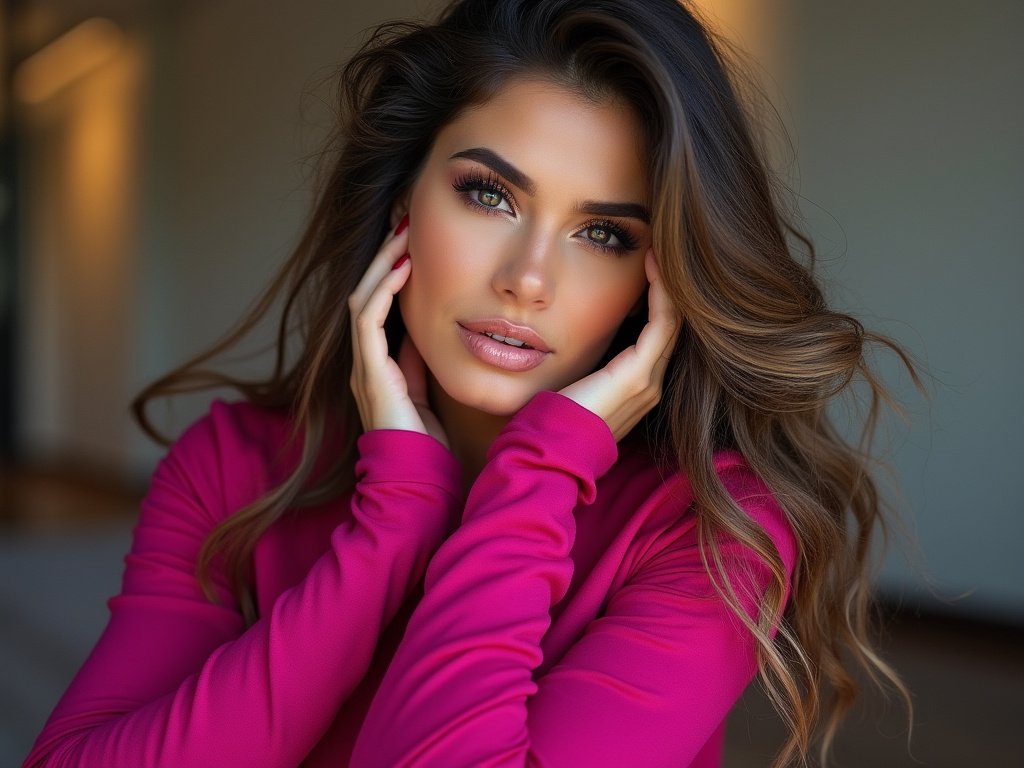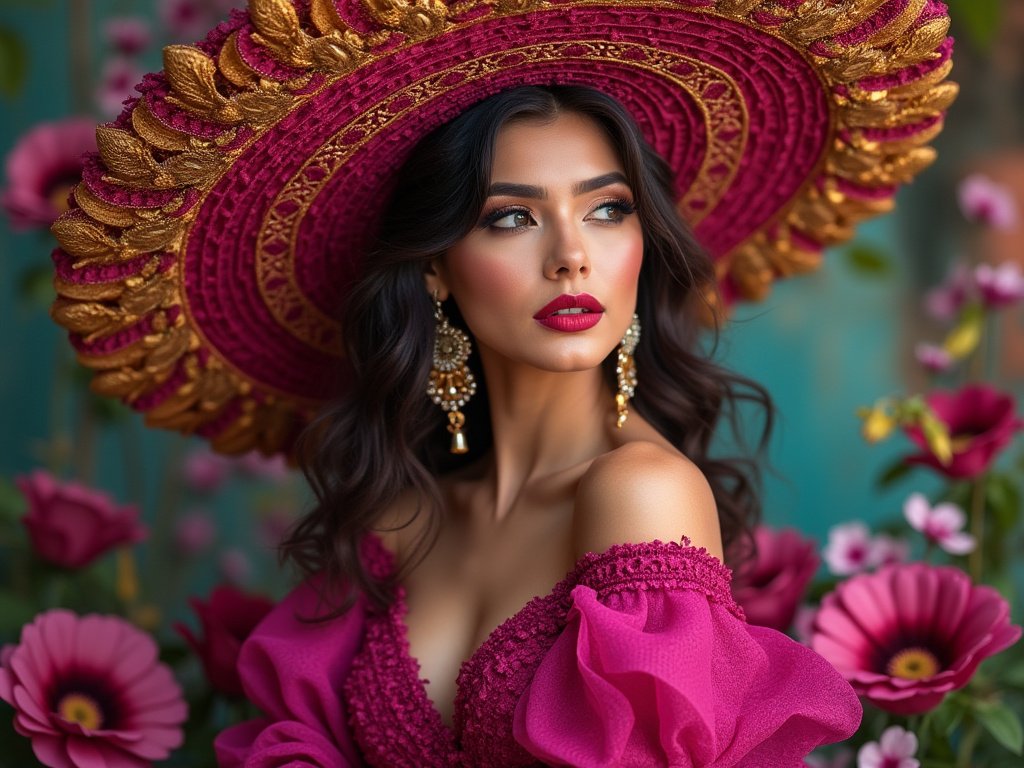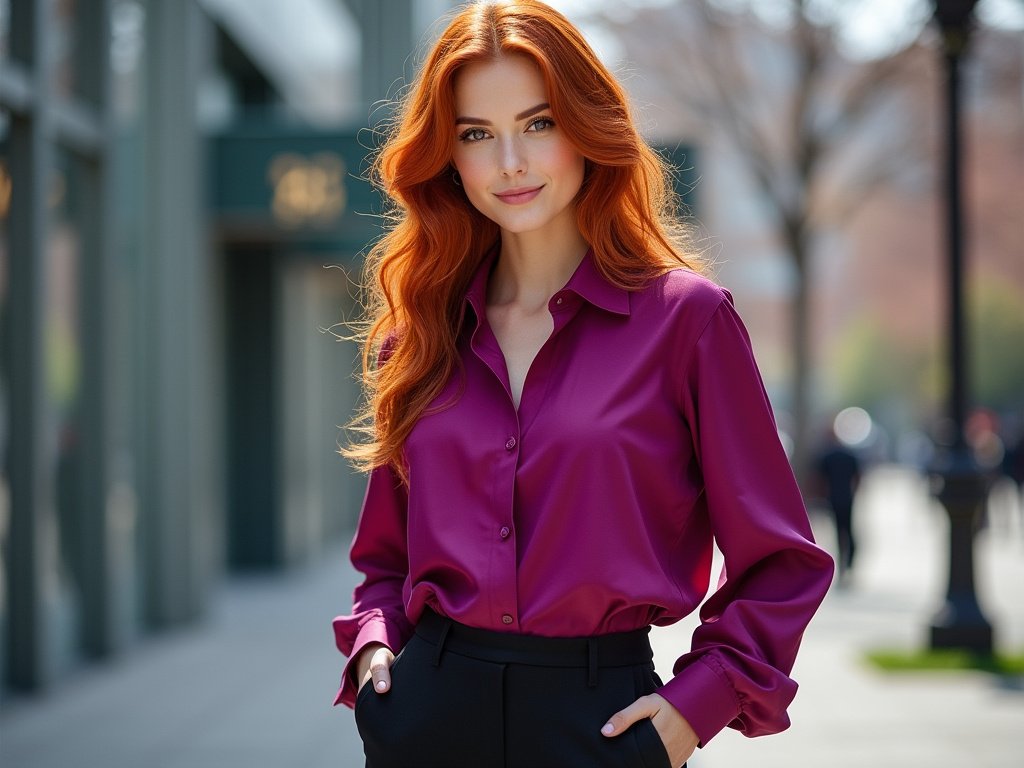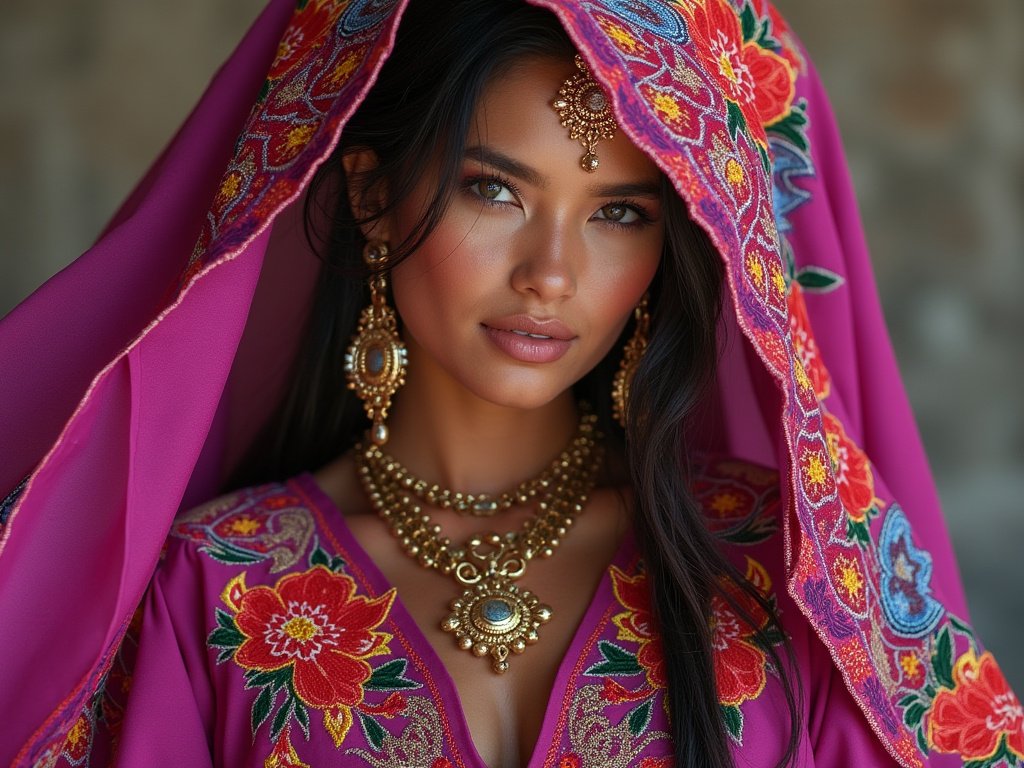Key Takeaways
- Magenta is a bold and vibrant color that combines red and purple hues
- This striking shade can evoke feelings of creativity, passion, and energy
- Magenta works well as an accent color in fashion and interior design
- Different shades of magenta can create varied moods and atmospheres
- Pairing magenta with complementary colors enhances its visual impact
- The color has cultural and symbolic meanings across different societies
- Magenta can be incorporated subtly or dramatically in personal style
- Understanding color psychology helps in effectively using magenta in design
Magenta, a color that dances on the edge of red and purple, has long captivated the human eye with its bold and vibrant presence. This striking hue, often associated with creativity, passion, and energy, has the power to transform spaces and wardrobes alike. From the runways of Paris to the walls of contemporary homes, magenta continues to make its mark in the world of fashion and design. But what is it about this captivating color that draws us in? Let’s embark on a journey to explore the magic of magenta and uncover the myriad ways it can influence our moods, choices, and surroundings.

The Psychology of Magenta
The power of color in shaping our perceptions and emotions is undeniable. Magenta, with its unique blend of warmth and coolness, occupies a special place in the color spectrum and in our psyche.
Emotional Resonance of Magenta
Magenta is a color that speaks to our emotions on multiple levels. It’s a hue that can evoke feelings of excitement, creativity, and even a touch of rebellion. When we encounter magenta, our senses are awakened, and we’re often filled with a surge of energy. This emotional resonance makes magenta a popular choice for those looking to make a statement or inject some vibrancy into their lives.
But magenta isn’t just about bold expressions. It can also tap into our softer side, evoking feelings of compassion and understanding. In some contexts, it represents harmony and balance, bridging the gap between the fiery passion of red and the calm stability of blue.
Magenta in Color Theory
In the realm of color theory, magenta holds a unique position. It’s one of the primary colors in the subtractive color model used in printing, alongside cyan and yellow. This means that magenta is a fundamental building block for creating a wide range of other colors.
Understanding magenta’s place in color theory can help us appreciate its versatility. When combined with other colors, magenta can create stunning palettes that range from soft and soothing to bold and energetic. Its ability to complement and contrast with various hues makes it a valuable tool in the designer’s toolkit.
Cultural Significance of Magenta
Across different cultures, magenta carries varied meanings and associations. In some Eastern traditions, it’s linked to spiritual awakening and enlightenment. In Western societies, it often symbolizes innovation and non-conformity.
The cultural significance of magenta has evolved over time. Once considered a color of royalty due to the rarity and expense of magenta dyes, it has now become a symbol of modern creativity and expression. This rich cultural history adds depth to magenta’s appeal, making it more than just a visually striking color.
Magenta in Fashion
Magenta has long been a darling of the fashion world, making appearances on runways and in street style alike. Its versatility and impact make it a go-to choice for designers and fashion enthusiasts.
Trending Magenta Outfits
In recent seasons, magenta has taken center stage in fashion trends. From head-to-toe magenta ensembles to subtle pops of the color in accessories, designers are finding myriad ways to incorporate this vibrant hue into their collections.
One trending look involves pairing a magenta blazer with neutral-toned pants for a bold yet sophisticated office outfit. Another popular style combines a flowing magenta maxi dress with metallic accessories for a stunning evening look. These trending outfits showcase magenta’s ability to transition seamlessly from day to night, casual to formal.
Accessorizing with Magenta
For those who prefer a more subtle approach to incorporating magenta into their wardrobe, accessories offer the perfect solution. A magenta handbag can add a pop of color to a monochromatic outfit, while magenta shoes can be a conversation starter.
Jewelry featuring magenta gemstones like rubellite or pink sapphires can add a touch of elegance to any ensemble. Even small accents like magenta nail polish or a magenta pocket square can make a big impact on overall style.
Magenta for Different Skin Tones
One of the beautiful aspects of magenta is its ability to complement a wide range of skin tones. For those with cool undertones, a blue-based magenta can create a harmonious look. Warm skin tones, on the other hand, can be enhanced by magenta shades with more red undertones.
It’s important to experiment with different shades of magenta to find the one that best suits your individual coloring. From deep berry tones to bright fuchsias, there’s a magenta out there for everyone.

Magenta in Interior Design
The world of interior design has embraced magenta with open arms, recognizing its power to transform spaces and create memorable environments.
Creating Mood with Magenta Walls
Painting a room in magenta can have a dramatic effect on its atmosphere. A deep magenta can create a cozy, intimate space perfect for bedrooms or dining rooms. A brighter magenta, on the other hand, can energize a living room or office space, promoting creativity and vitality.
When using magenta on walls, it’s crucial to consider the lighting in the room. Natural light can bring out the vibrancy of magenta, while artificial lighting might alter its appearance. Experimenting with different shades and testing them under various lighting conditions can help achieve the desired mood.
Magenta Furniture and Decor
For those not ready to commit to magenta walls, incorporating the color through furniture and decor pieces can be an excellent alternative. A magenta sofa can become the focal point of a living room, while magenta throw pillows or curtains can add pops of color to a neutral space.
Magenta artwork, whether it’s a bold abstract painting or a series of photographs, can also bring life to walls without the commitment of paint. Even small touches like magenta vases or lampshades can make a significant impact on a room’s overall aesthetic.
Balancing Magenta with Other Colors
While magenta is undoubtedly a showstopper, it’s essential to balance it with other colors to create a harmonious interior. Pairing magenta with neutrals like white, gray, or beige can help temper its intensity while still allowing it to shine.
For a more dynamic look, combining magenta with complementary colors like lime green or teal can create a vibrant, energetic space. The key is to find the right balance that suits your personal style and the function of the room.
The Science of Magenta
Magenta is not just a feast for the eyes; it’s also a fascinating subject from a scientific perspective. Understanding the science behind this captivating color can deepen our appreciation for its unique qualities.
Magenta in the Color Spectrum
Interestingly, magenta doesn’t exist on the visible light spectrum. It’s what’s known as an “extra-spectral color,” meaning our brains create the perception of magenta by combining red and violet light. This quirk of human perception makes magenta a particularly intriguing color to study.
How Our Eyes Perceive Magenta
The way our eyes perceive magenta is a testament to the complexity of human vision. When we see magenta, our red and blue cones are stimulated in the absence of green stimulation. Our brain interprets this combination as magenta, even though it doesn’t correspond to a single wavelength of light.
Magenta in Nature
While magenta might seem like a creation of human perception, it does appear in nature. Many flowers, such as certain orchids and fuchsias, display stunning magenta hues. Some animals, like the pink flamingo, also exhibit magenta-like colors in their plumage.
The presence of magenta in nature often serves specific purposes, such as attracting pollinators or signaling to potential mates. Understanding these natural occurrences of magenta can inspire new ways of using the color in design and fashion.

Magenta in Art and Photography
Artists and photographers have long been drawn to the allure of magenta, using it to create striking visual compositions and evoke powerful emotions.
Famous Artworks Featuring Magenta
Throughout art history, magenta has made memorable appearances in various masterpieces. From the vibrant paintings of Henri Matisse to the pop art creations of Andy Warhol, magenta has been used to convey energy, passion, and modernity.
One notable example is Yves Klein’s “Monopink” series, where he explored the intensity and depth of magenta pigments. These works challenged viewers’ perceptions and pushed the boundaries of color in art.
Magenta in Digital Art
In the digital realm, magenta continues to play a crucial role. It’s one of the primary colors in the CMYK color model used in digital printing, allowing for the creation of a wide range of hues. Digital artists often use magenta to add vibrancy to their creations or to create striking contrasts.
Photography Techniques with Magenta
Photographers have found numerous ways to incorporate magenta into their work. In landscape photography, magenta often appears during “magic hour” – the time just before sunrise or after sunset when the sky takes on ethereal hues.
In portrait photography, magenta can be used to create dramatic lighting effects or to complement skin tones. Some photographers even experiment with magenta-tinted filters to add a unique atmosphere to their images.
Magenta in Branding and Marketing
The power of magenta extends into the world of branding and marketing, where its bold presence can help companies stand out in a crowded marketplace.
Companies That Use Magenta
Several well-known brands have embraced magenta as a key part of their visual identity. T-Mobile, for instance, has made magenta its signature color, using it prominently in all aspects of its branding. Lyft, the ride-sharing company, also incorporates magenta into its logo and marketing materials.
These companies leverage magenta’s associations with innovation, creativity, and youthfulness to appeal to their target audiences. The distinctive color helps them create a memorable brand identity that sets them apart from competitors.

Psychology Behind Magenta in Advertising
Marketers often use magenta strategically in advertising to evoke specific emotions or reactions from consumers. The color’s energetic and passionate qualities can help create a sense of urgency or excitement around a product or service.
Moreover, magenta’s ability to stand out makes it an effective choice for grabbing attention in crowded advertising spaces. Whether it’s on a billboard or in a magazine spread, magenta can help an ad catch the eye and leave a lasting impression.
Effective Use of Magenta in Logo Design
When it comes to logo design, magenta can be a powerful tool. Its vibrancy and uniqueness make it an excellent choice for companies looking to create a bold, modern image. However, it’s crucial to use magenta thoughtfully in logo design, considering factors like legibility and how the color will appear across different mediums.
Successful magenta logos often balance the intensity of the color with simpler design elements. This approach ensures that the logo remains impactful without becoming overwhelming or difficult to read.
Magenta in Different Cultures
The perception and significance of magenta vary across different cultures, adding depth to our understanding of this captivating color.
Magenta in Eastern Traditions
In many Eastern cultures, magenta holds spiritual significance. It’s often associated with enlightenment and higher consciousness. In Hinduism, for example, magenta is linked to the crown chakra, representing spiritual connection and divine wisdom.
Western Interpretations of Magenta
In Western societies, magenta is often seen as a color of non-conformity and innovation. It’s associated with creativity, independence, and a willingness to break from tradition. This perception has made magenta a popular choice in contemporary art and design.
Magenta in Religious Symbolism
While not as commonly used in religious contexts as some other colors, magenta does appear in certain religious traditions. In some Christian denominations, it’s used during specific liturgical seasons to represent joy and anticipation.
Global Fashion Trends Involving Magenta
Fashion trends involving magenta often reflect cultural attitudes towards the color. In some cultures, magenta is seen as a bold, fashion-forward choice, while in others, it might be associated with traditional garments or celebrations.
Magenta in National Symbols
Some countries incorporate magenta-like hues into their national symbols or flags. The flag of Qatar, for example, features a shade close to magenta. Understanding these cultural uses of magenta can provide insights into its global significance.

The Future of Magenta
As we look ahead, it’s clear that magenta will continue to play a significant role in fashion, design, and visual culture.
Emerging Trends in Magenta Usage
Fashion and design trends indicate that magenta will remain a popular choice in the coming years. We’re seeing an increased interest in more nuanced shades of magenta, from soft, dusty tones to deep, rich hues. These variations allow for more subtle and sophisticated uses of the color.
Technological Advancements and Magenta
Advancements in technology are opening up new possibilities for the use of magenta. In digital displays, improvements in color rendering are allowing for more accurate and vibrant representations of magenta. This is particularly exciting for digital artists and designers who rely on precise color reproduction.
Sustainability and Magenta Dyes
As sustainability becomes increasingly important in fashion and design, there’s growing interest in eco-friendly magenta dyes. Research into natural and low-impact dyes that can produce vibrant magenta hues is ongoing, promising a more sustainable future for this beloved color.
Magenta in Everyday Life
Magenta’s influence extends beyond the realms of fashion and design, touching various aspects of our daily lives.
Magenta in Nature and Gardens
While not as common as some other colors, magenta does appear in nature, particularly in flowers. Gardeners and plant enthusiasts often seek out magenta blooms to add vibrancy to their outdoor spaces. Flowers like fuchsias, certain varieties of orchids, and some types of dahlias showcase stunning magenta hues.
Incorporating magenta flowers into a garden can create focal points and add depth to the overall color scheme. These bold blooms can be particularly effective when paired with complementary green foliage.
Magenta in Food and Beverages
In the culinary world, magenta makes appearances in both natural and artificial forms. Some foods naturally display magenta hues, such as certain varieties of dragonfruit or beetroot. These ingredients are often used not just for their flavor but also for their ability to add striking color to dishes.
In the beverage industry, magenta-colored drinks have gained popularity, often associated with fruity or floral flavors. From cocktails to smoothies, the vibrant color adds visual appeal and can influence taste perceptions.
Magenta in Technology and Gadgets
The tech world has also embraced magenta, with many companies using the color in their product designs. From smartphone cases to laptop covers, magenta accessories offer a way to personalize and add flair to everyday devices.
Some tech companies have even incorporated magenta into their user interfaces, using the color to highlight important features or create a distinctive brand identity within their software.

Summary Table
| Aspect | Description | Example |
|---|---|---|
| Psychology | Evokes creativity, energy, and passion | Used in branding to create excitement |
| Fashion | Versatile color for both bold and subtle styles | Magenta accessories or full outfits |
| Interior Design | Can create various moods depending on shade and usage | Accent walls or furniture pieces |
| Art | Used to convey emotion and create visual impact | Pop art and contemporary paintings |
| Cultural Significance | Varies across different societies and traditions | Spiritual symbolism in Eastern cultures |
| Branding | Helps companies stand out and convey innovation | T-Mobile’s signature magenta branding |
| Nature | Appears in flowers and some animals | Fuchsia flowers and flamingo plumage |
| Technology | Used in digital displays and product design | Colorful tech accessories and UI elements |
Conclusion
The magic of magenta lies in its versatility and impact. From the runways of high fashion to the walls of our homes, this captivating color continues to inspire and energize. Its ability to evoke emotions, create striking visual effects, and complement a wide range of other hues makes it a invaluable tool in the worlds of design, art, and personal expression.
As we’ve explored, magenta’s influence extends far beyond aesthetics. Its cultural significance, psychological impact, and even its unique position in color theory all contribute to its enduring appeal. Whether used boldly as a statement color or subtly as an accent, magenta has the power to transform spaces, outfits, and moods.
As we look to the future, it’s clear that magenta will continue to play a significant role in shaping our visual world. From sustainable dyes to digital innovations, the possibilities for this vibrant hue are endless. By understanding and harnessing the power of magenta, we can all add a touch of magic to our lives, one shade at a time.

Frequently Asked Questions
What exactly is magenta?
Magenta is a vibrant color that sits between red and purple on the color wheel. It’s unique in that it doesn’t appear on the visible light spectrum but is instead a combination of red and blue light perceived by our brains.
How can I incorporate magenta into my wardrobe?
You can start small with magenta accessories like scarves or jewelry, or go bold with a magenta statement piece like a blazer or dress. Experiment with different shades to find what complements your skin tone and personal style.
Is magenta suitable for professional environments?
While bold, magenta can be appropriate for professional settings when used thoughtfully. A magenta blouse under a neutral suit or a magenta tie can add a pop of color without being overwhelming.
What colors pair well with magenta?
Magenta pairs beautifully with neutrals like white, black, and gray. For more dynamic combinations, try pairing it with complementary colors like lime green or teal.
Can magenta be a calming color?
While often associated with energy and excitement, softer shades of magenta can indeed create a calming atmosphere, especially when balanced with neutral tones.
How does magenta affect mood?
Magenta is often associated with creativity, passion, and energy. It can stimulate the mind and evoke feelings of confidence and enthusiasm.
Is magenta more suited to certain seasons?
Magenta can be worn year-round, but it’s often associated with spring and summer due to its vibrant nature. However, deeper magenta shades can also work beautifully in fall and winter wardrobes.
How can I use magenta in home decor without it being overwhelming?
Start with small accents like throw pillows, artwork, or vases. If you want to go bolder, consider a magenta accent wall balanced with neutral furnishings. The key is to use it strategically and balance it with complementary colors.

Neha Z. is not just any writer; she’s a storyteller who has graced the online world with her evocative prose for over half a decade. Venturing into the intricate nuances of women’s lives, she weaves stories that range from life’s highs and lows to the multifaceted essence of femininity. Each piece she pens radiates sincerity and artistry. As you delve into Neha’s musings, you’ll find reflections that echo your own journey and insights that inspire. Immerse yourself in her world, and let her stories touch your heart.
Reviewed By: Joanna Perez and Anna West
Edited By: Lenny Terra
Fact Checked By: Matthew Mansour
Photos Taken or Curated By: Matthew Mansour
